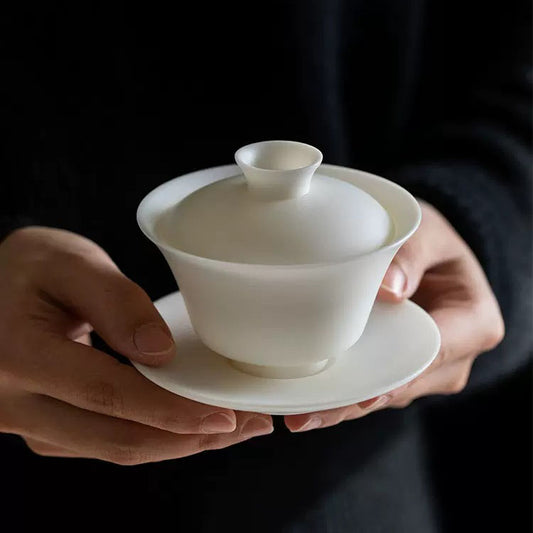
Mutton fat jade porcelain on the Maritime Silk Road
The Maritime Silk Road was a major sea route for trade between ancient China and Southeast Asia, India, Arabia, Africa, and other regions. Along this route, Mutton fat jade porcelain, as a representative type of Chinese porcelain, was widely exported to the countries and regions along the way, becoming a symbol of Chinese culture and art.
During the process of the Maritime Silk Road, Mutton fat jade porcelain was influenced by the cultures of other countries and regions, absorbing different cultural elements. For example, the design of porcelain decoration may incorporate Islamic patterns, Persian floral patterns, and other elements. The fusion of these elements made Mutton fat jade porcelain more diverse in artistic style.
The various countries along the way highly praised China's Mutton fat jade porcelain and regarded it as a precious work of art. These countries and regions also incorporated their own cultural elements into the porcelain, forming a cultural exchange and fusion. This exchange of multiple cultures not only enriched the artistic style of Mutton fat jade porcelain but also promoted cultural exchange and economic development among different countries and regions.
Mutton fat jade porcelain on the Maritime Silk Road is a representation of Chinese culture and art and a product of cultural exchange and fusion between China and foreign countries. Its diverse artistic style not only represents Chinese traditional culture but also embodies the exchange and fusion of different cultures.

Mutton fat jade porcelain on the Tea Horse Ancient Road
The Tea Horse Ancient Road was a land trade route for tea and horse trading between ancient China's southwestern region and Tibet, South Asia, and other regions. Besides tea and horses, many other goods, including Mutton fat jade porcelain, were traded along this road. These porcelain items were transported along the Tea Horse Ancient Road to Tibet, Nepal, India, and other regions, becoming precious items in those areas.
On the Tea Horse Ancient Road, Mutton fat jade porcelain was also influenced by the cultures of different regions. For example, the patterns and designs of ethnic groups such as the Tibetan and Yi might appear on the porcelain decoration. These cultural elements enriched the artistic style and contributed to cultural exchange and fusion in the local area.
The exchange of Mutton fat jade porcelain on the Tea Horse Ancient Road was not just a simple trade of goods but also a cultural exchange and fusion. Through the transportation and circulation of Mutton fat jade porcelain, different cultural elements were spread and exchanged, promoting the diversity and development of culture. Mutton fat jade porcelain also continuously absorbed and fused new cultural elements in this process, allowing its artistic value to continue and flourish.

In summary, Mutton fat jade porcelain played an important role along both the Maritime Silk Road and the Tea Horse Ancient Road. It became a representative of Chinese culture and art and continuously absorbed and fused new cultural elements in various exchanges, enriching its own artistic value. The exchange and fusion of these cultural elements also deepened mutual understanding and friendship among different regions.





